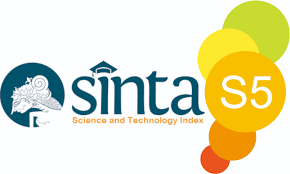The Effect of Digital Technology and Agility On Company Performance with Management Accounting System as Mediation
DOI:
https://doi.org/10.34010/injuratech.v2i1.6552Keywords:
Digital Technology, Management Accounting System, Company PerformanceAbstract
The aim of this research was to look into and evaluate the impact of digital technology and agility with management accounting information systems as a mediating variable. The research method used is descriptive analysis and verification. By distributing questionnaires addressed to directors / managers / heads of company divisions. The results showed that digital technology and agility mediated Accounting information systems used by management have a positive impact on organization success. Based on the structural model's assessment, digital technology and accounting information system for management agility have a better strong outcome than the direct effect with a value of 85%. accounting information system for management are required to get over uncertainty in deciding and evaluating the causal relationship that occurs due to digital technology that continues to develop in the millennial era with the agility that companies need. The contribution of research so that companies continue to innovate with changing technological developments and a manager's agility is crucial in decision making.
References
[2] Emron, E., Anwar, Y., & Komariah, I. (2016). Manajemen Sumber. Daya Manusia. Bandung: Alfabeta.
[3] Scafà, M., Papetti, A., Brunzini, A., & Germani, M. (2019). How to improve worker’s well-being and company performance: A method to identify effective corrective actions. Procedia CIRP, 81, 162–167.
[4] Larsen, R. K., Österlin, C., & Guia, L. (2018). Do voluntary corporate actions improve cumulative effects assessment? Mining companies’ performance on Sami lands. Extractive Industries and Society, 5(3), 375–383.
[5] Phillips, S., Thai, V. V., & Halim, Z. (2019). Airline Value Chain Capabilities and CSR Performance: The Connection Between CSR Leadership and CSR Culture with CSR Performance, Customer Satisfaction and Financial Performance. Asian Journal of Shipping and Logistics, 35(1), 30–40.
[6] Li, C. M., Cui, T., Nie, R., Lin, H., & Shan, Y. (2019). Does diversification help improve the performance of coal companies? Evidence from China’s listed coal companies. Resources Policy, 61(February 2018), 88–98.
[7] Dumitrache, C., Kherbash, O., & Mocan, M. L. (2016). Improving Key Performance Indicators in Romanian Large Transport Companies. Procedia - Social and Behavioral Sciences, 221, 211–217.
[8] Martí-Ballester, C. P. (2017). Sustainable energy systems and company performance: Does the implementation of sustainable energy systems improve companies’ financial performance? Journal of Cleaner Production, 162, S35–S50.
[9] Song, H., Zhao, C., & Zeng, J. (2017). Can environmental management improve financial performance: An empirical study of A-shares listed companies in China. Journal of Cleaner Production, 141, 1051–1056.
[10] Xu, L., Zhang, Q., Wang, K., & Shi, X. (2020). Subsidies, loans, and companies’ performance: evidence from China’s photovoltaic industry. Applied Energy, 260(August 2019).
[11] Garrido-Prada, P., Delgado-Rodriguez, M. J., & Romero-Jordán, D. (2019). Effect of product and geographic diversification on company performance: Evidence during an economic crisis. European Management Journal, 37(3), 269–286.
[12] Blessing, G., Natter, M. (2019). Do Mystery Shoppers Really Predict Customer Satisfaction and Sales Performance? Journal of Retailing, 95(3), 47–62.
[13] Khin, S., & Ho, T. C. F. (2019). Digital technology, digital capability and organizational performance: A mediating role of digital innovation. International Journal of Innovation Science, 11(2), 177–195.
[14] Ahani, A., Nilashi, M., Yadegaridehkordi, E., Sanzogni, L., Tarik, A. R., Knox, K., Samad, S., & Ibrahim, O. (2019). Revealing customers’ satisfaction and preferences through online review analysis: The case of Canary Islands hotels. Journal of Retailing and Consumer Services, 51(June), 331–343.
[15] Bivisyani Questibrilia. (2019). Human Resource.
[16] Lerch, C., & Gotsch, M. (2015). Digitalized product-service systems in manufacturing firms: A case study analysis. Research Technology Management, 58(5), 45–52.
[17] Mezger, F. (2014). Toward a capability-based conceptualization of business model innovation: Insights from an explorative study. R and D Management, 44(5), 429–449.
[18] Brennen, J.S. and Kreiss, D. (2016). Digitalization. In The International Encyclopedia of Communication Theory and Philosophy,Wiley-Blackwell, Chichester (pp. 556–566).
[19] Matzler, K., Bailom, F., von den Eichen, S. F., & Kohler, T. (2013). Business model innovation: Coffee triumphs for Nespresso. Journal of Business Strategy, 34(2), 30–37.
[20] Kiel, D., Arnold, C., Collisi, M., & Voigt, K. I. (2016). The impact of the industrial internet of things on established business models. IAMOT 2016 - 25th International Association for Management of Technology Conference, Proceedings: Technology - Future Thinking, July, 673–695.
[21] Coupette, J. (2015). Digitalisierung zwischen Erwartung und Implementierung. IM+io Fachzeitschrift Fur Innovation, Organisation Und Management, 1, 69–75
[22] Finance.detik.com
[23] Pontianak Tribune Journalist, 2016
[24] Christopher, M., & Towill, D. R. (2010). Developing Market Specific Suppyl Chain. The International of Logistics Management, 13(1), 1–16.
[25] Adim, C.V., Lebura, S., & Adubasim, E.I. (2017). Innovation culture and organization in hospitality firms in Port Harcourt. Nigerian Business and Social Riview, 9(1), 66–79.
[26] Weber, M. A., Schiffrin, E. L., White, W. B., Mann, S., Lindholm, L. H., Kenerson, J. G., Flack, J. M., Carter, B. L., Materson, B. J., Ram, C. V. S., Cohen, D. L., Cadet, J. C., Jean-Charles, R. R., Taler, S., Kountz, D., Townsend, R., Chalmers, J., Ramirez, A. J., Bakris, G. L., … Harrap, S. B. (2014). Clinical practice guidelines for the management of hypertension in the community a statement by the american society of hypertension and the international society of hypertension. Journal of Hypertension, 32(1), 3–15.
[27] McKinsey & Company. (2001). The war on talent. McKinsey & Company Inc.
[28] Worldwide Quality Assurance (APAC). (n.d.). No Title. Email: Jakarta@wqa-Sea.Com. www.wqa-apac.com
[29] Wynn-Williams, K. L. H. (2005). Performance assessment and benchmarking in the public sector: An example from New Zealand. Benchmarking, 12(5), 482–492. https://doi.org/10.1108/14635770510619393
[30] Chiu, V., Liu, Q., Muehlmann, B., &..Baldwin, A. A. (2019). A bibliometric analysis of accounting information systems journals and their emerging technologies contributions. International Journal of Accounting Information Systems, 32(November), 24–43. https://doi.org/10.1016/j.accinf.2018.11.003
[31] Kocsis, D. (2019). A conceptual foundation of design and implementation research in accounting information systems. International Journal of Accounting Information Systems, 34, 100420. https://doi.org/10.1016/j.accinf.2019.06.003
[32] Appelbaum, D., Kogan, A., Vasarhelyi, M., & Yan, Z. (2017). Impact of business analytics and enterprise systems on managerial accounting. International Journal of Accounting Information Systems, 25(April), 29–44. https://doi.org/10.1016/j.accinf.2017.03.003
[33] Meiranto, W., Widiastuti, K., & Puspitasari, E. (2013). Peran Karakteristik Sistem Akuntansi Manajemen Sebagai Variabel Yang Memediasi Pengaruh Teknologi Informasi Dan Saling Ketergantungan Terhadap Kinerja Manajerial (Studi Pada PD BPR BKK se-Jawa Tengah). Dinamika Akuntansi, Keuangan Dan Perbankan, 2(1), 1–13.
[34] Mia, L., & Chenhall, R. H. (1994). The usefulness of management accounting systems, functional differentiation and managerial effectiveness. Accounting, Organizations and Society, 19(1), 1–13.
[35] Gordon, L. A., & Narayanan, V. K. (1984). Management accounting systems, perceived environmental uncertainty and organization structure: An empirical investigation. Accounting, Organizations and Society, 9(1), 33–47. https://doi.org/10.1016/0361-3682(84)90028-X
[36] Kompas.com 2016.
[37] Jensen, M., C., dan W. Meckling, 1976. “Theory of the firm: Managerial behavior, agency cost and ownership structure”, Journal of Finance Economic 3:305- 360, diakses dari: http://www.nhh.no/for/courses/spring/eco420/jensenmeckling-76.pdf.
[38] Unruh, G., Kiron, D. (2017). Digital transformation on purpose. MIT Sloan Management Review, 6.
[39] Westerman, G., Calméjane, C., Bonnet, D., Ferraris, P., & McAfee, A. (2011). Digital Transformation: A roadmap for billion-dollar organizations. MIT Center for Digital Business and Capgemini Consulting, 1, 1–68.
[40] Bloching, B., Leutiger, P., Oltmanns, T., Rossbach, C., Schlick, T., Remane, G., ... & Shafranyuk, O. (2015). Die digitale Transformation der Industrie. Was sie bedeutet. Wer gewinnt. Roland Berger Strategy Consultants and BDI, Munich, Berlin, February.
[41] Linz, C., Müller-Stewens, G., & Zimmermann, A. (2017). Radical business model transformation: Gaining the competitive edge in a disruptive world. Kogan Page Publishers.
[42] Kagermann, H., Wahlster, W., & Helbig, J. (2013). Recommendations for implementing the strategic initiative Industrie 4.0: Final report of the Industrie 4.0 Working Group. Forschungsunion: Berlin, Germany.
[43] Porter, M.E., and Heppelman, J.. (2015). How Smart, Connected Products Are Trannsforming Companies. Harvard Business Review, 93(10), 96–114.
[44] Mehrabi, S., Siyadat, S., & Allameh, S. (2013). Examining the degree of organizational agility from employees’ Perspective (Agriculture-Jahad Organization of Shahrekord City). International Journal of Academic Research in Business and Social Sciences, 3(5), 315–323.
[45] Wyman-Oliver. (2018). Financial Deepening in Indonesia.Funding Infastructure Development Catalyzing Economic Growth. Mandiri Institute.
[46] Thomas, J. B., Clark, S. M., & Gioia, D. A. (1993). Strategic sensemaking and organizational performance : Linkages among scanning ... Management, 36(2), 239–270. http://www.ncbi.nlm.nih.gov/pubmed/10125120
[47] Abdul Halim. 2009. Akuntansi sector Publik Akuntansi Keuangan Daerah, Edisi Pertama. Jakarta: Salemba Empat
[48] Slavković, M., & Babić, V. (2013). Knowledge management, innovativeness, and organizational performance: Evidence from Serbia. Economic Annals, 58(199), 85–108.
[49] Chenhall, R. H. (2018). Management control systems design within its organizational context: findings from contingency-based research and directions for the future. Accounting, Organizations and Society, 89(4), 127–168.
[50] Hariyati, Tjahjadi, B., & Soewarno, N. (2019). The mediating effect of intellectual capital, management accounting information systems, internal process performance, and customer performance. International Journal of Productivity and Performance Management, 68(7), 1250–1271.
[51] Ong, C. S., & Chen, P. Y. (2014). The effects of IT: From performance to value. Industrial Management and Data Systems, 114(1), 70–85.
[52] Chen, Y., Wang, Y., Nevo, S., Benitez, J., & Kou, G. (2017). Improving strategic flexibility with information technologies: Insights for firm performance in an emerging economy. Journal of Information Technology, 32(1), 10–25. https://doi.org/10.1057/jit.2015.26
[53] Gligor, D. M., Esmark, C. L., & Holcomb, M. C. (2015). Performance outcomes of supply chain agility: When should you be agile? Journal of Operations Management, 33–34, 71–82.
[54] Mukesh Kumar, Sandeep Singh, and Santanu Kumar Rath(2015). Classification of microarray data using functional link neural network. Procedia Computer Science, 57:727–737
[55] Ayu, G., & Dahen, L. D. (2015). Pengaruh Karakteristik Informasi Sistem Akuntansi Manajemen Terhadap Kinerja Manajerial Studi Empiris Pada Pt Bank Perkreditan Rakyat Di Kabupaten Tanah Datar. Economica, 3(1), 89–94.
[56] Chia, Y. M. (1995). Decentralization, Management Accounting System (Mas) Information Characteristics and Their Interaction Effects on Managerial Performance: a Singapore Study. Journal of Business Finance & Accounting, 22(6), 811–830.
[57] Wadan, R., Teuteberg, F., Bensberg, F., & Buscher, G. (2019). Understanding the Changing Role of the Management Accountant in the Age of Industry 4.0 in Germany. Proceedings of the 52nd Hawaii International Conference on System Sciences, 5817–5826.
[58] Aguinis, H., Cascio, W. F., & Ramani, R. S. (2017). Science’s reproducibility and replicability crisis: International business is not immune. Journal of International Business Studies, 48(6), 653–663.
[59] Ekweli, F., & Hamilton, P. D. I. (2020). Product Innovation And Organizational Agility In The Banking Sector Of Nigerian Economy. Global Scientific Journal, 8(1)
[60] Soobaroyen, T., & Poorundersing, B. (2008). The effectiveness of management accounting systems: Evidence from functional managers in a developing country. In Managerial Auditing Journal (Vol. 23, Issue 2).
[61] Pedroso, E., Gomes, C. F., & Yasin, M. M. (2020). Management accounting systems: an organizational competitive performance perspective. Management Accounting Systems, 27(6), 1843–1874.
[62] Hutahayan, B. (2020). The mediating role of human capital and management accounting information system in the relationship between innovation strategy and internal process performance and the impact on corporate financial performance. Benchmarking, 27(4), 1289–1318. https://doi.org/10.1108/BIJ-02-2018-0034
[63] Sekaran, Uma., dan R. B. (2017). Metode Penelitian Untuk Bisnis : Pendekatan Pengembangan Keahlian (6th ed.). Salemba Empat.
[64] Arifin, Z. (2014). Penelitian Pendidikan : Metode dan Paradigma Baru. PT Remaja Rosdakarya
[65] Sugiyono. (2017). Metode Penelitian Kuantitatif, Kualitatif, dan R&D. Bandung: Alfabeta, CV
[66] Hair, Jr., et, al. (2010). Multivariate Data Analysis (7th ed.). United States: Pearson.
[67] Ghazali dan Latan. (2015). Structural Equation Modelling Alternative Method With Partial Last Squere. BP Diponegoro University.
[68] Kim, W., Kim, H., & Hwang, J. (2020). Sustainable growth for the self-employed in the retail industry based on customer equity, customer satisfaction, and loyalty. Journal of Retailing and Consumer Services, 53(February 2019), 101963.
[69] Wadan, R., Teuteberg, F., Bensberg, F., & Buscher, G. (2019). Understanding the Changing Role of the Management Accountant in the Age of Industry 4.0 in Germany. Proceedings of the 52nd Hawaii International Conference on System Sciences, 5817–5826.
[70] Ismail,Fajri.2018.Statistika untuk Penelitian Pendidikan dan Ilmu-ilmu Sosial, Jakarta : Prenadamedia Group.












